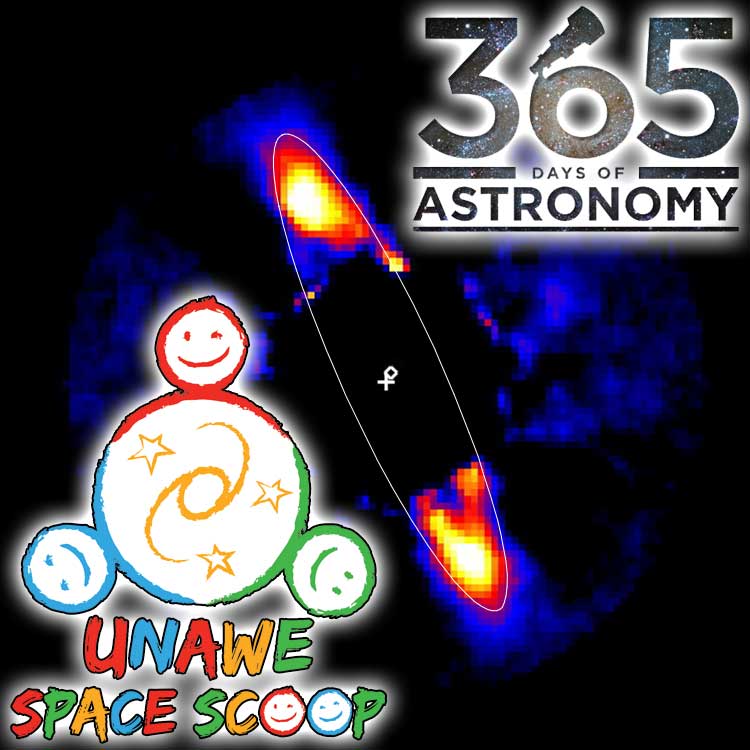Podcaster: Richard Drumm
 Title: Space Scoop: View of a Toddler Solar System
Title: Space Scoop: View of a Toddler Solar System
Organization: 365 Days Of Astronomy
Link : astrosphere.org ; http://unawe.org/kids/unawe1526/
Description: Space scoop, news for children.
Bio: Richard Drumm is President of the Charlottesville Astronomical Society and President of 3D – Drumm Digital Design, a video production company with clients such as Kodak, Xerox and GlaxoSmithKline Pharmaceuticals. He was an observer with the UVa Parallax Program at McCormick Observatory in 1981 & 1982. He has found that his greatest passion in life is public outreach astronomy and he pursues it at every opportunity.
Today’s sponsor: This episode of “365 Days of Astronomy” is sponsored by — no one. We still need sponsors for many days in 2015, so please consider sponsoring a day or two. Just click on the “Donate” button on the lower left side of this webpage, or contact us at signup@365daysofastronomy.org.
Transcript:
This is 365 Days of Astronomy. Today we bring you a new episode in our Space Scoop series. This show is produced in collaboration with Universe Awareness, a program that strives to inspire every child with our wonderful cosmos.
Today’s story is…
View of a Toddler Solar System
How can we find out how our cosmic home came to be? Humans have existed for 200,000 years, so there was no one around to see the birth of our 4.5 billion year old Solar System.
Compared to the solar system we’re like the blink of an eye.
One way is to look at other Solar Systems as they are born. Take, for example, the solar system in the picture in today’s album artwork. We think it looks very much like our Solar System did when it was a toddler.
The star at its centre, called HD 115600 and located in the constellation Centaurus, has a similar size to our Sun and the fact that the ring is offset from the star and is not particularly circular is even evidence of a giant gas planet in an eccentric orbit. The center of the disk is the diamond shape in the graphic while the star is located at the + sign.
Our Solar System has 2 gas giants: Jupiter & Saturn, and 2 ice giants: Uranus & Neptune, that have enough mass to cause an effect like this. But it’s the outer edge of this young system that looks the most like our cosmic home.
When our Solar System formed, it was awash with trillions of icy, rocky bodies, called comets. Most of the comets that were close to the Sun were destroyed. They either crashed into one of the planets or moons and became part of them, got their orbits modified so that they crashed into the Sun or were thrown out into interstellar space by the powerful gravity of Jupiter.
At the very edge of our Solar System there is still today an enormous ring, made up of millions of icy comets that circle the Sun. This is called the Kuiper belt after the Dutch astronomer Gerard Kuiper who theorized that small planets & comets might have existed past Neptune long, long ago. Pluto is inside the Kuiper belt, along with a few other dwarf planets, assorted icy bodies, micron-sized dust and many short-period comets, all left over from the formation of the solar system.
New images of this young solar system taken by the Gemini South Telescope’s GPI, the Gemini Planet Imager instrument, have revealed a ring around the parent star, about the same size as the Kuiper belt. And just like our Solar System, it’s spectrum tells us it probably contains dust and icy particles, too!
The Gemini South Telescope has provided the best picture we’ve ever had of what the far reaches of our Solar System might have been like when it was very young!
Thank you for listening to 365 Days of Astronomy!
Hey, Here’s a Cool Fact:
The first mission to the Kuiper Belt and beyond will fly past Pluto on July 14 2015, 4 days after this show gets published. It’s called New Horizons.
End of podcast:
365 Days of Astronomy
=====================
The 365 Days of Astronomy Podcast is produced by NUCLIO. Audio post-production by Richard Drumm. Bandwidth donated by libsyn.com and wizzard media. You may reproduce and distribute this audio for non-commercial purposes. Please consider supporting the podcast with a few dollars (or Euros!). Visit us on the web at 365DaysOfAstronomy.org or email us at info@365DaysOfAstronomy.org. This year we celebrate cosmic light as light is our info messenger in the universe. Join us and share your story to celebrate the International Year of Light. Until tomorrow! Goodbye!

